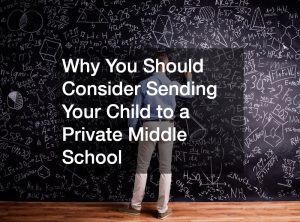- I. Introduction
- II. Understanding the Role of a PE Teacher
- III. Educational and Certification Requirements
- IV. Gaining Practical Experience
- V. Researching State-Specific Licensure Requirements
- VI. Completing Physical Education Teacher Preparation Programs
- VII. Meeting Licensure Exam Requirements
- VIII. Applying for Teaching Licensure
- IX. Developing Specializations within PE
- X. Continuing Professional Development
- XI. Finding PE Teaching Positions
- XII. Thriving as a PE Teacher
- XIII. Conclusion
I. Introduction
Many people aspire to become physical education (PE) teachers to help children and young adults lead a healthier, more active lifestyle. PE teachers have the opportunity to inspire their students by instilling within them an appreciation for fitness and athletics. As a PE teacher, you can influence students’ physical and mental health and help them develop skills that will benefit them throughout their lives.
This article provides a comprehensive guide to becoming a physical education teacher in 2023. It outlines the qualifications and requirements necessary to become certified as a PE teacher, including educational requirements, licensing exams, additional steps for candidates already holding teaching certification, and more. It also provides guidance on preparing for a successful job search. With this information in hand, you can take the necessary steps to become a teacher of PE.
II. Understanding the Role of a PE Teacher

When it comes to physical education, PE teachers have an incredibly important job. They are responsible for ensuring that students get the most out of each physical activity and learn skills that will help them stay active throughout their lives. PE teachers must know about various activities, such as sports, dance, and fitness. They also need to know how to motivate and encourage students to engage in these activities.
In addition to teaching physical education concepts, PE teachers also play a valuable role in promoting health and wellness among students. They can use physical activity to teach essential skills such as teamwork, communication, problem-solving, and leadership. PE teachers help foster an environment where students feel safe to try new things and take healthy risks without fear of failure.
The most successful physical education teachers have strong interpersonal skills, a passion for teaching, and the ability to be flexible and creative in their approach. They should also have an understanding of physical development and nutrition so they can help students make informed decisions about health-related topics.
III. Educational and Certification Requirements
With few exceptions, all states and schools require that PE teachers hold at least a bachelor’s degree in education or physical education. Many states also require physical education teachers to have additional nutrition, kinesiology, exercise science, anatomy, and physiology coursework. A master’s degree may be required for higher-level positions such as athletic director or head coach.
Having a formal education in physical education or a related field is important for PE teachers. A degree will provide prospective employers with evidence of your knowledge and expertise and demonstrate that you are well-versed in the latest trends and best practices in physical education. A degree can also help PE teachers stay up-to-date on new sports or activities, develop and implement new fitness programs, and tailor their lesson plans to meet the needs of students.
In addition to educational requirements, prospective PE teachers must also pass a licensing exam to become certified. The state or school you are applying for determines which licensing exams you must take. Some states may require additional certification in areas like health, wellness, nutrition, or other related topics.
IV. Gaining Practical Experience

Aspiring PE teachers should also take advantage of any opportunities to gain practical experience. Student teaching or internships in physical education settings will give you a chance to observe and practice your teaching methods with actual students. You may even be able to find coaching positions at local schools, which can provide valuable insight into how best to manage and motivate student-athletes.
Gaining real-world experience in physical education can help you develop the skills necessary to be a successful PE teacher. You can observe and learn from more experienced teachers, practice engaging students in physical activity, understand classroom management techniques, and develop your own lesson plans. All these experiences will give you a better understanding of how to effectively teach physical education and create an engaging learning environment for your students.
V. Researching State-Specific Licensure Requirements
As mentioned earlier, each state has different requirements for physical education teachers. Some states may require additional certifications or classes, while others may have specific exams or qualifications for PE candidates. One of the most important steps in becoming a PE teacher in 2023 is researching state-specific licensure requirements.
The best way to do this is to contact your state’s Board of Education or Department of Education and ask for specific licensure information. Here, you can find out what exams are required as well as any other certification or coursework needed to become a PE teacher. You may also find state-specific websites or resources with more detailed information about the licensure process for PE teachers.
VI. Completing Physical Education Teacher Preparation Programs
Many states and school districts require that aspiring PE teachers complete an accredited physical education teacher preparation program. These programs are designed to provide students with the knowledge, skills, and abilities necessary to be successful in their future roles as educators.
Accredited physical education teacher preparation programs help prospective PE teachers better understand how to teach physical education concepts, create meaningful lesson plans, develop activities that engage students, and foster a healthy learning environment. Upon completing the program, students will be well-prepared to meet state licensure requirements and find employment as physical education teachers.
Examples of institutions offering accredited physical education programs include The University of Utah’s Master of Arts in Physical Education, Michigan State University’s Bachelor of Science in Physical Education, and Arizona State University’s Master of Education in Physical Education.
VII. Meeting Licensure Exam Requirements
There are different requirements for licensure in each state, but most require prospective physical education teachers to pass one or more licensing exams. Commonly used tests include the Praxis Core Academic Skills for Educators (Core) and the Praxis Subject Assessments in Physical Education.
To successfully pass these licensure exams, you must be well-prepared and knowledgeable about physical education concepts. It is also beneficial to take practice tests or review study guides to become familiar with the exam format and types of questions you may encounter on the test.
VIII. Applying for Teaching Licensure
After completing the preparation steps outlined above, it is time to apply for teaching licensure. The application process and required documentation vary by state and school district, but in general, you will need to submit an application form, provide proof of necessary qualifications (such as transcripts or exam scores), pay a fee, and pass a background check.
Depending on the state or school district, the application process can take anywhere from a few days to several weeks. Potential PE teachers may face common challenges, including difficulty submitting necessary documentation or passing background checks due to prior convictions.
If you encounter any issues with your application process, it is best to contact your state’s Board of Education or Department of Education for assistance.
IX. Developing Specializations within PE
Physical education teachers also have different opportunities to specialize in the field. For example, a physical education teacher may choose to focus on adaptive physical education, which involves providing instruction and activities tailored toward students with special needs or disabilities. Additionally, several sports-specific coaching certifications allow PE teachers to specialize in baseball, football, basketball, hockey, and other popular sports.
Specializing in a particular area of physical education can benefit teachers and students. It allows teachers to gain expertise in their chosen field, better understand the needs of their students, and find job opportunities that match their skills. Specialized PE teachers also have the opportunity to teach more advanced concepts or activities to students with a greater interest in specific sports or activities.
Examples of programs or resources for gaining specialization in physical education include the National Federation of State High School Associations (NFHS), USA Basketball, and the American Coaching Association (ACA). Each organization offers a variety of courses, certifications, and resources for PE teachers looking to further their knowledge and skills.
X. Continuing Professional Development
If you are looking to become a physical education teacher in 2023, it is important to stay up-to-date on the latest trends and best practices in the field. Ongoing professional development opportunities can help PE teachers stay informed about new techniques for teaching physical education concepts, develop their instructional skills, and gain knowledge about health and wellness topics relevant to students.
Professional development can take many forms, including attending conferences or workshops, pursuing certifications, joining professional organizations, reading industry publications, and participating in online courses. These activities provide PE teachers with the opportunity to network with colleagues and gain insight into various aspects of physical education.
The National Association for Sport and Physical Education (NASPE) is a good resource for PE teachers seeking professional development opportunities. They provide a variety of workshops, conferences, and online courses for PE teachers to stay up-to-date on the latest industry topics. Additionally, organizations such as The American Alliance for Health, Physical Education, Recreation, and Dance (AAHPERD) offer certifications in areas like adapted physical education and fitness instruction.
XI. Finding PE Teaching Positions
With the necessary qualifications, certifications, and experience in hand, the final step to becoming a physical education teacher in 2023 is finding a job. The job search process for PE teachers can be intimidating at first, but with patience and dedication, you can secure a great teaching position.
The best place to start your job search is by networking with professionals in the field. Reach out to your college professors, physical education teachers, and coaches to find out about job openings or upcoming opportunities. You can also join professional organizations such as the National Association for Sport and Physical Education (NASPE) or The American Alliance for Health, Physical Education, Recreation and Dance (AAHPERD), which often have job listings on their websites.
In addition to networking, you should also utilize education job platforms such as Indeed or Teach.com to find PE job postings at local schools. These sites allow you to search for job openings by location, level of experience, and type of position. Once you have identified a few potential job opportunities, it is important to tailor your resumes and cover letters for each school and be prepared for interviews.
XII. Thriving as a PE Teacher

As a new physical education teacher, you may face unique challenges in the classroom. Developing effective classroom management and lesson planning strategies can help ensure that your students have a positive learning experience and stay engaged in class.
One of the first steps to take is finding ways to foster relationships with your students. Getting to know them on an individual level can go a long way in creating a positive learning environment and helping them reach their full potential. Additionally, providing students with engaging activities and lesson plans can help keep them motivated and excited to participate in physical education class.
It is also important for new PE teachers to have access to mentorship programs or support systems during the transition into teaching. Seeking advice from more experienced PE teachers or coaches will help you gain the necessary confidence and skills to manage your classroom effectively. Additionally, attending conferences or workshops related to physical education can give you a better understanding of current trends in the field.
XIII. Conclusion
Becoming a physical education teacher in 2023 is a challenging but achievable goal. It requires dedication and preparation, but with the right qualifications and experience, you can find success as a PE teacher. Researching state-specific licensure requirements, completing physical education preparation programs, and finding opportunities for practical experience are all key elements of the process. With the right resources and support, you can find meaningful and rewarding work as a physical education teacher.
The job search process for PE teachers requires patience and effort, but if done properly it can lead to great opportunities. Networking with industry professionals, utilizing education job platforms, and tailoring your resumes for each school are all great ways to increase your chances of finding the perfect teaching position. As a PE teacher, you will have the opportunity to make a lasting impact on the lives of your students and help them understand the importance of physical education.
















